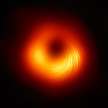Will there be an ICE AGE in near future?
Unveiling the Enigmatic Polar Vortex: Implications for Climate Change

The term "foreign polar vortex" has been making waves in media circles in recent years. This seasonal high-altitude atmospheric phenomenon forms in autumn, consolidates during winter, and dissolves in spring. Its movements and shifts from the vertical axis of polar latitudes are often responsible for sudden changes in tropospheric circulation, causing variations that, especially in recent years, have led to the abrupt spread of polar air towards mid-latitudes. However, the polar vortex isn't exclusive to Earth; it is a structure present on other planets as well. In this article, we will delve into the mysteries of the polar vortex, its role in shaping Earth's climate, and its potential impact on our future.
The Polar Vortex Unveiled
If you live in intermediate latitudes like the northern United States or northern Europe, you've likely experienced the wrath of the polar vortex. Picture this: you go to bed on a mild autumn night, only to wake up semi-frozen in the morning. Your car is buried under half a meter of snow and encased in ice. Rushing to the TV, you hear your favorite meteorologist explaining that the polar vortex is to blame. This phenomenon became widely known in January 2014 when temperatures in some areas plummeted to alarming levels, reaching as low as -50 degrees Celsius.
Surprisingly, even in December 2022 and February 2021, the United States experienced exceptionally cold periods with snowstorms and record-low temperatures, leading to unfortunate fatalities. These incidents seem to contradict predictions made by advocates of global warming. Instead of a steady increase in temperatures, the United States has been witnessing sudden drops in winter temperatures. This phenomenon is intrinsically linked to the Arctic Vortex.
What is the Polar Vortex?
In meteorology, the polar vortex, also known as the Arctic Vortex, is an expansive low-pressure region that remains semi-permanent at higher altitudes above the North Pole. It is present almost continuously during the cold season and is much more extensive than any other low-pressure area. Unlike low-pressure systems affecting Central Europe, which can have diameters of 1,000 to 2,000 kilometers or more, the Arctic Vortex covers the entire Arctic Circle, with a center roughly over the North Pole, sometimes extending to mid-latitudes with a diameter exceeding 5,000 kilometers.
The vortex primarily develops in the stratosphere, typically between 12 and 50 kilometers in altitude above the troposphere and tropopause. However, it can often influence the lower layers of the troposphere as well, especially when it's intense, creating a tropospheric polar vortex. Meteorologists differentiate between the stratospheric vortex, which reaches its peak intensity in January and February, and the tropospheric vortex, which is more or less present throughout the year.
Planetary Polar Vortices
The polar vortex isn't unique to Earth. Similar cyclones have been observed on other planets with thick atmospheres, such as Venus and Mars. These vortices vary in size and form but share a common origin—a gaseous fluid surrounding a rotating celestial body. For example, Saturn's North Pole features a mesmerizing hexagonal vortex, a truly unique phenomenon in our solar system. The exact origin of this hexagonal structure remains a scientific mystery.
The Polar Vortex and Earth's Climate
The polar vortex plays a pivotal role in regulating Earth's climate. It acts as a natural system for maintaining each hemisphere's climate. However, this system is not without its quirks. The vortex's edge, delineated by jet streams, is not circular but rather wavy with protrusions and indentations. These irregularities can cause the leakage of cold air beyond its usual boundaries.
Now, why does the overflow of cold air from the vortex wreak havoc in North America but not in Europe? Several factors contribute to this difference. Firstly, the presence of warm ocean currents like the Gulf Stream and the Mediterranean Sea in Europe creates a milder climate compared to the colder ocean currents influencing North America's coasts. Additionally, mountain ranges like the Rockies in North America channel cold winds eastward, while the Alps in Europe act as a barrier to cold northern air masses.
The Polar Vortex and Climate Change
The big question looming over the polar vortex is its susceptibility to climate change. Some proponents of global warming theory suggest that rising temperatures could lead to distortions in the polar vortex, resulting in sudden cold spells. The hypothesis centers around the melting of Arctic sea ice during the summer months, which warms the Arctic Ocean and weakens the winds that form the vortex's barrier.
Data from the last decade indicate a stronger tendency for the vortex to weaken in years with significant Arctic sea ice loss. However, not everyone agrees with this theory. If it proves accurate, it could have dire consequences, including disruptions in ocean currents and a potential collapse of the polar vortex.
Conclusion
In conclusion, the polar vortex is a complex and fascinating meteorological phenomenon that has far-reaching implications for Earth's climate. While we continue to study its behavior and its connection to climate change, one thing is clear: the polar vortex is a reminder of the intricate interplay of factors that shape our world's climate. As we move forward, it is crucial to monitor and understand this phenomenon to better prepare for the potential consequences of a changing climate.






Comments
There are no comments for this story
Be the first to respond and start the conversation.